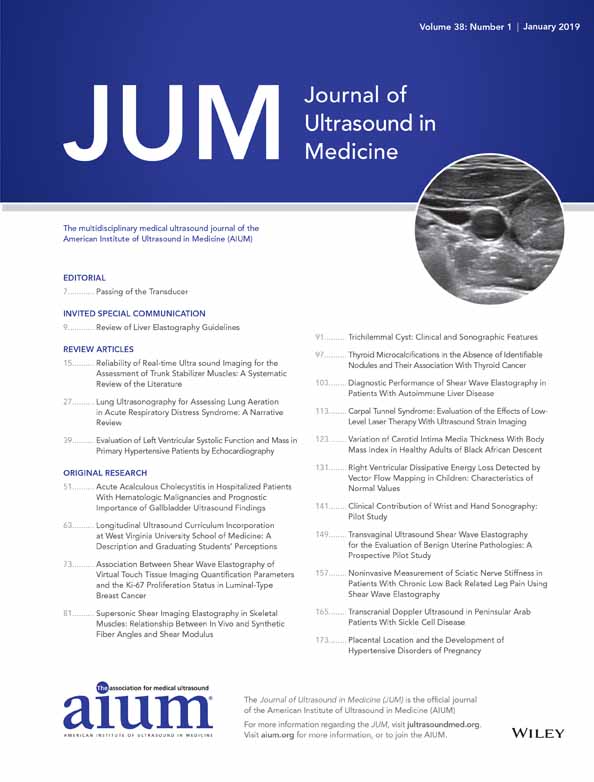Evaluation of Intratesticular Lesions With Strain Elastography Using Strain Ratio and Color Map Visual Grading: Differentiation of Neoplastic and Nonneoplastic Lesions
Approval to report this retrospective review of recorded data was obtained from hospital review board and given a registration number of KCH14-102. Preliminary results of this study were presented at RSNA meeting in 2015 as an oral presentation.
Abstract
Objective
To investigate the role of strain elastography using calculated strain ratio and visual elastography score in differentiating nonneoplastic, benign, and malignant neoplastic intratesticular lesions.
Materials and Methods
The study was approved by the hospital review board as a retrospective review of 86 patients examined with gray scale, color Doppler ultrasonography and strain elastography (visual elastography score and strain ratio). Sensitivity, specificity, and positive and negative likelihood ratio of color Doppler and stain elastography were documented. Receiver operator characteristic curves assessed the diagnostic accuracy of strain elastography to discriminate nonneoplastic, benign, and malignant neoplasms. Histology or follow-up ultrasonography determined lesion character.
Results
Thirty-one of 86 (36.0%) intratesticular malignant neoplasms, 17 of 86 (19.8%) benign neoplasms, and 38 of 86 (44.2%) nonneoplastic lesions were confirmed with histology (n = 52) or follow-up sonography (n = 34); 89.5% of intratesticular lesions were heterogeneous or hypoechoic on gray scale, with no difference between benign and malignant. Sensitivity, specificity, positive and negative likelihood ratio for nonneoplasm versus neoplasm were documented: color Doppler: 68.8%, 97.4%, 26.5, 0.32; visual elastography score: 81.3%, 57.9%, 1.93, 0.32; strain ratio: 68.8%, 81.6%, 3.73, 0.38. Neoplastic lesions showed a higher strain ratio than nonneoplastic lesions (P < .001), with strong correlation between median strain ratio and visual elastography score (Spearman's coefficient, 0.693; P < .001). Strain ratio is a significantly better assessment than visual elastography score for malignant lesions (P = .025). Logistic regression analysis revealed significant associations between size (P = .001), hypervascularity (P < .001), and malignancy.
Conclusion
Higher strain ratio and visual elastography score are associated with neoplastic lesions and offer an alternative to assess tissue characteristics but do not improve the diagnostic accuracy when compared with the color Doppler pattern.




